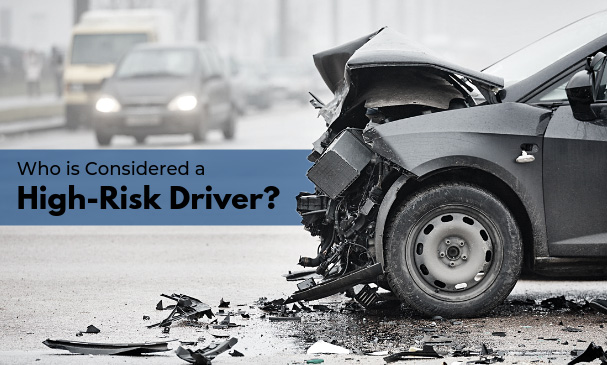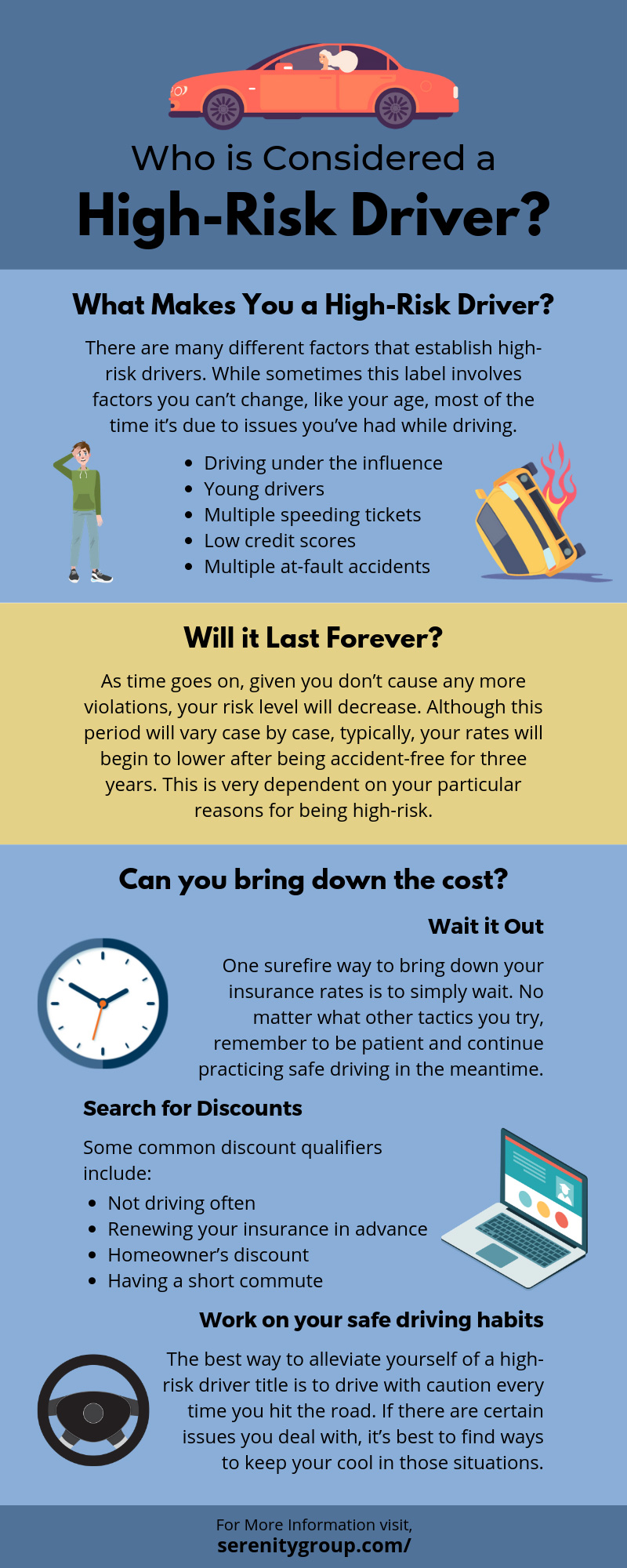Who is Considered a High-Risk Driver?

We all know the term “high-risk driver,” but what does a high-risk driver actually look like? There are many different reasons an insurance company may deem you one, and they’re each vastly from one another. We may conjure up images of drivers swerving between lines and getting in multiple accidents, and while this is high-risk behavior, it can be much more nuanced. It begs the question: who is considered a high-risk driver? From the exact qualifications to how long it will last, here’s all you need to know about high-risk driving.
What makes you a high-risk driver?
There are many different factors that establish high-risk drivers. While sometimes this label involves factors you can’t change, like your age, most of the time it’s due to issues you’ve had while driving. Here’s a total breakdown of who is considered a high-risk driver and the actions that caused them to get that label.
Driving under the influence
It’s a given that if you’re found guilty of driving under the influence, you’re a high-risk driver. Even if it’s your first offense, drivers will typically see a surge in their insurance premiums and will most likely need to file for SR22 insurance. The actual severity will vary from person to person, so it’s dependent on your particular situation.
If you’re in need of SR22 insurance in Washington, New York, or anywhere in between, Serenity Group is here to help.
Young drivers
For teens just starting to drive, insurance companies may perceive you as higher-risk. Since you haven’t been driving for very long, you’re a riskier driver to take on, which in turns leads to more expensive insurance. There’s not much you can do about this one; however, as times goes on, insurance companies will no longer deem you a risk. Prove that you are reliable by never speeding, not getting into an at-fault accident, and always practicing caution and good driving methods while on the road.
Multiple speeding tickets
If you’ve got a need for speed that just won’t quit, you may seem some nasty hikes in your insurance cost. Drivers with multiple speeding tickets on their record are high-risk since their driving has the potential to cause an accident and harm themselves or others. The more reckless of a driver you are, the higher risk you are.
Low credit scores
When it comes to insurance companies, low credit scores will make you a trickier driver to take on. While it may not directly correlate to your driving, companies are still likely to take it into account. Your credit score is one way for insurers and lenders to see if you’re reliable. As such, the lower your score, the more likely you’ll be seen as a high-risk driver. However, as long as you diligently work to bring your credit up, you can relieve yourself of this moniker.
Multiple at-fault accidents
Just like those found speeding, if you’re found at-fault in multiple car accidents, insurance companies will usually view you as a high-risk driver. Due to the dangerous conditions you created and the fact that it happened multiple times, your insurance will probably be much more expensive. However, this follows a case-by-case basis. For example, insurers regard a minor fender-bender much differently than a major accident.
Will it last forever?
Luckily, if you receive the title of high-risk driver, it isn’t something that has to follow you forever. As time goes on, given you don’t cause any more violations, your risk level will decrease. Although this period will vary case by case, typically, your rates will begin to lower after being accident-free for three years. This is very dependent on your particular reasons for being high-risk. For example, DUIs are more serious than speeding tickets. Don’t get your hopes up too much or expect something unrealistic. Rather, work diligently toward improving your driving record.
Can you bring down the cost?
While high-risk drivers will see a higher cost on their insurance, there are still ways to bring it down. As long as you do the proper research and ask the right questions, you can see a significant decrease in price. We cover a few steps and methods you can use to lower costs.
Wait it out
One surefire way to bring down your insurance rates is to simply wait. No matter what other tactics you try, remember to be patient and continue practicing safe driving in the meantime. Before you know it, you may find your expenses start to decrease. However, if you get antsy and start going back to your old driving habits, you’re sure to see your insurance cost rise again. Typically, it takes at least three years to see rates go down, so keep the course—you’ll get there.
Search for discounts
When you use the right research techniques, it’s easier to find discounts than you may think. It’s an understatement to say there are several reasons you can get a discount. Some common discount qualifiers include:
- Not driving often
- Renewing your insurance in advance
- Homeowner’s discount
- Having a short commute
Take the time to inquire with your insurance company—it never hurts to ask if you could qualify for a discount.
Work on your safe driving habits
There are few ways as effective for saving money as simply driving safely. The best way to alleviate yourself of a high-risk driver title is to drive with caution every time you hit the road. If there are certain issues you deal with, such as speeding or experiencing road rage, it’s best to find ways to keep your cool in those situations. Everyone has different triggers for their dangerous behavior, so make note of what causes yours and take preventative measures.
If you fall into one of these high-risk driver categories, it may feel like the end of the world. Don’t let this get you down—it may feel daunting to have this label, but with hard work and perseverance, you can get back to driving freely and living the life you want.


Recent Comments